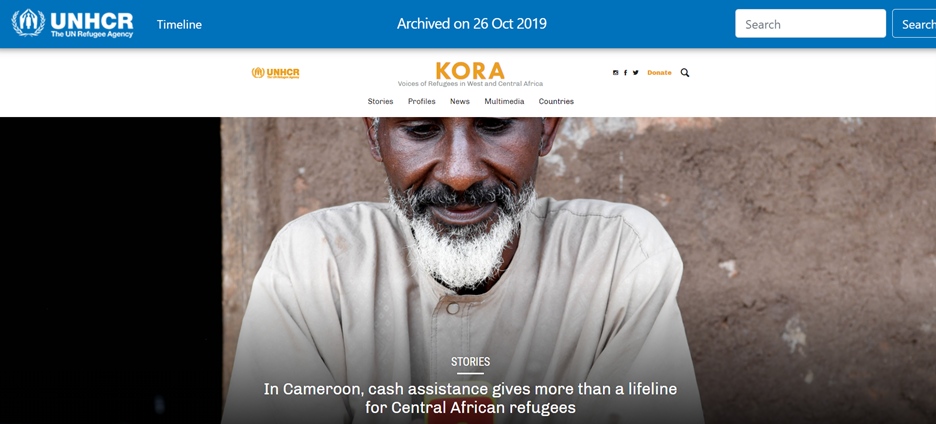Tom Wilson is Associate Archivist (Digital Preservation) at the UN High Commission for Refugees
Breaking down barriers is something that often appears in the day-to-day work of UNHCR albeit, more often than not, in the metaphorical sense. Whether it’s providing shelter for refugees, access to healthcare, informing the public of the plight of refugees and other persons of concern or one of the many other activities that UNHCR carries out, UNHCR seeks to remove the barriers that can prevent people fleeing from conflict from reaching safety. Part of this work is done on the internet and by amplifying the voices of refugees or advocating on their behalf and this is where UNHCR’s web-archive comes in to help preserve this content for posterity.
Refugees and other persons of concern do not always have the opportunity to make their voices heard for a variety of reasons. This can include fleeing from an active war zone, being unable to access a reliable means of communication, language barriers or attempts by other groups to suppress the voices of those fleeing from persecution. Part of UNHCR’s mission to support refugees is to help make their voice heard in the wider world, either by advocating on behalf of refugees or by providing them with platforms on which to speak and make their voices heard. In some cases, these platforms are to help raise public awareness of the cause of refugees and in other cases, the sites are made for refugees to speak to other refugees or to pass on their stories.
One of the examples of this that I would like to share is the project “Do you see what I see”. The aim of this project was to help people to understand life as a refugee in camp Za’atari, Jordan, from the point of view of refugee children living in the camp. A group of children were given cameras and asked to document observations from their daily lives and to write a little about them. These photos and words were then uploaded to the project website for the public to see. This site helped to cross boundaries as the viewpoints of refugee children are not so often heard and this gave a more personal insight into the lives of these children, including their hopes and fears. As for the website hosting the photos, this was taken down in 2016/2017 due to the short-term nature of funding for the project, so the only place that this site can still be accessed is in the UNHCR web-archive.

https://webarchive.archive.unhcr.org/20151216120443/http://refugee-photo-project.unhcr.org/en/
Another of these sites is the “Telling the Real Story” site. This site allows refugees and asylum seekers from Eritrea and Somalia to share their experiences of the journey to Europe in their own language. The site is intended to help connect this group with each other and to also pass on their stories to family and friends back in their home countries. This is another example of a viewpoint that may not be heard so often in the narratives around refugees and the migration across the Mediterranean Sea, where the majority of the narrative may come from the viewpoint of onlookers and can often be just a few short minutes in a news report. We feel that it is important to preserve this content as part of UNHCR’s institutional memory as it records the more human side of our work that other records may not do in the same way.

https://webarchive.archive.unhcr.org/20190720104433/http://tellingtherealstory.org/
The final site I’d like to highlight is the Kora blog which tells the stories of refugees and internally displaced persons in West and Central Africa. Named after the stringed instrument popular in the area and often used in storytelling sessions, this site gives refugees a chance to tell their stories to the wider world. This site brings another side to the stories of refugees and showcases stories of resilience and adaptability in the face of adversity, so is an important addition to the institutional memory of UNHCR.

https://webarchive.archive.unhcr.org/20191026010417/http://kora.unhcr.org/
Whilst the UNHCR web-archive itself is not out in the field day-to-day, we are still a part of UNHCR’s mission. By preserving digital content created in support of this mission and making it permanently and publicly accessible, we are working to ensure that the voices of refugees are preserved for future generations to hear. The variety of sites also ensure that future researchers will hear from refugees from a viewpoint of personal experience, in their own words and not only from the viewpoint of external observers. So, it is in this way that UNHCR and the Records and Archives Section use digital preservation to help remove the barriers that might otherwise hinder the understanding of the plight of refugees.
For more information, please contact archives@unhcr.org.
